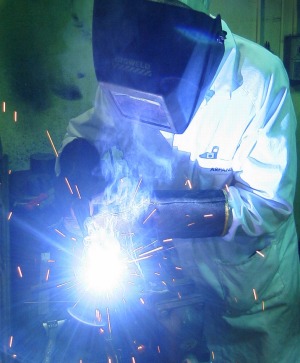welding

Manual metal-arc welding.
Welding is the bringing together of two pieces of metal under conditions of heat or pressure or both, until they coalesce at the joint. The oldest method is forge welding, in which the surfaces to be joined are heated to welding temperature and then hammered together on an anvil. The most widely used method today is metal-arc welding: an electric arc is struck between an electrode and the workpieces to be joined, and molten metal from a "filler rod" – usually the electrode itself – is added. Gas welding, now largely displaced by metal-arc welding, is usually accomplished by means of an oxyacetylene torch, which delivers the necessary heat by burning acetylene in a pure oxygen atmosphere. Sources of heat in other forms of welding include the electrical resistance of the joint (resistance welding), an electric arc at the joint (flash welding), a focused beam of electrons (electron-beam welding), pressure alone, usually well in excess of 1,4,000,000 kilopascals (cold welding), and friction (friction welding). More recent applied heat sources include hot plasmas, lasers, ultrasonic vibrations, and explosive impacts.


